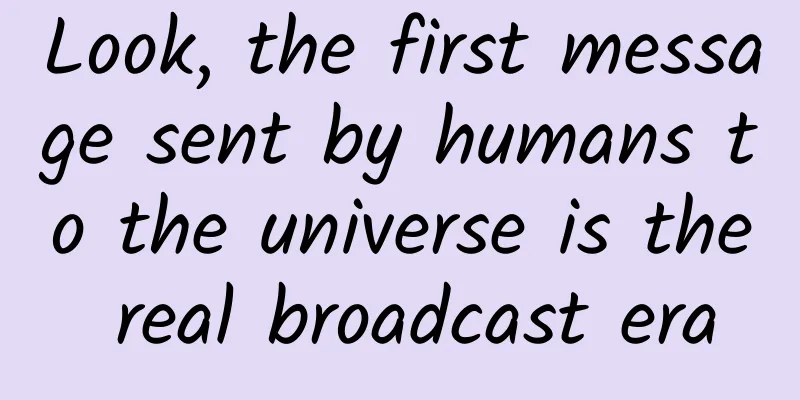Never wipe the blackboard for scientists without permission...

|
If all the blackboards in the world disappeared overnight, the people who would suffer the most would probably be mathematicians and physicists. Blackboards have witnessed many highlights in the history of science. Those amazing scientific ideas or core calculations have been written on them. Many legendary scientists have iconic "blackboard portraits". For this reason, never wipe a scientist's blackboard without permission. Written by | Du Baojie Throughout the history of human civilization, all great scientists have a common "assistant" - the blackboard. On this ordinary board, miraculous scientific ideas or core calculations have been written. So scholars call for not erasing the content left by scientists on the blackboard, because it may be a crucial equation and the source of inspiration. Legend has it that when Roman soldiers broke into the home of the ancient Greek mathematician, astronomer and physicist Archimedes and killed him, his last request was "Don't touch my circle." Valerius Maximus, a writer active in the 1st century AD, also described this in his book Deeds and sayings worth remembering: "No, please don't disturb the sand," because Archimedes was immersed in calculating a geometric figure at the time. This may be the first time a mathematician shouted "Don't erase." Image: Oil painting of "The Death of Archimedes" conceived and created by the artist | Source: National Trust Images In ancient Greece and Rome, a "blackboard" was simply a wooden board covered with fine ash or sand, on which users could draw and calculate with a wooden stick. When was the first blackboard in the world invented? There is no way to know for sure. Some scholars believe that the blackboard originated in Britain before the 19th century, when students would carry a small piece of wood as a writing board to school, on which they would write letters or prayers. Later, Scottish educator James Pillans invented the first blackboard for classroom teaching. He used an easily erasable blackboard and colored chalk to teach geography. Image: Blackboard portraits of David Hilbert and Einstein. Source: Google, Wikipedia In the 1770s, modern mathematics pioneer Leonhard Euler had already begun drafting equations on large blackboards to record and express mathematical ideas. In the late 19th century and the 20th century, blackboards witnessed more highlights. Many hall-of-fame mathematicians and scientists have iconic "blackboard portraits", such as Hilbert, Poincare, Kolmogorov, as well as Einstein, Faraday, Schrödinger, Feynman, etc. For these academic predecessors, although the blackboard is primitive and simple, it has a unique charm in visualization and communication of ideas. They constantly calculate and write on the blackboard, exploring the beauty of mathematical logic and the depth of physics, and promoting the exchange and discussion of top academic ideas through the combination of abstraction and empiricism. Left: Tsung-Dao Lee; Right: Chen-Ning Yang With the advancement of technology, the blackboard in the classroom is now being replaced by whiteboards, PPT multimedia presentations and even interactive LED whiteboards. In the future, will this tool, which is crucial to scientific success, become endangered or even disappear completely? This has attracted the attention and relevant discussions of many scholars. Scientists' preference for blackboards If blackboards and chalk disappeared overnight, mathematicians would probably be among the groups that would suffer the most. An interesting incident happened in March 2015, when Hagoromo Stationery, located in Aichi Prefecture, Japan, announced its bankruptcy. This news made many mathematicians anxious. It turned out that mathematicians from all over the world, except Japan, loved to use Hagoromo chalk because it was called the Rolls-Royce of chalks. It produced less dust, was difficult to break, and was smooth and did not dirty hands. It made mathematicians feel very comfortable when writing on the blackboard. Fortunately, Hagoromo Stationery was later acquired by other companies and did not really run out of stock. Mathematics courses taught on the blackboard are often more fascinating. The lecturer starts with an empty blackboard and gradually fills it with symbols and diagrams in real time. Audience members who want to listen carefully have no choice but to take notes while listening and pay close attention to every move on the stage, because at some point in the lecture, the writing will be erased and replaced by new character images, and it is easy to lose train of thought if you are not careful. Image: American mathematician David Eisenbud teaches via blackboard | Source: Alchetron For many mathematicians, demonstrating how formulas are derived and how ideas are developed on the blackboard is like a unique subject performing art, and this exciting scene leaves a deep impression on many audiences. For the audience, the information conveyed and absorbed on the blackboard is a gradual process. The lecturer presents the steps and methods at a speed that the audience can keep up with, rather than showing all the pre-drawn content on the slides at once. Modern tools still have some inherent shortcomings. PPT cannot let the audience see the speaker derive, think, and write a large number of advanced mathematical proofs. The disadvantage of whiteboard pens is that they are easy to run out of ink while writing. Electronic whiteboards are prone to delays, freezes, or power outages. Therefore, in mathematics and other theoretical subjects, the reliability of the blackboard and chalk combination is particularly outstanding. In addition, writing on the blackboard makes a subtle sound and requires patience, which is a prerequisite for immersive creation. The late Finnish mathematician, science historian and writer Osmo Pekonen visited top mathematical research institutions around the world, including those in Paris, Cambridge, Mumbai, Princeton and Stockholm. In all these institutions whose main mission is to cultivate thinking, he found one thing in common: blackboards and chalk are everywhere, not only in offices and lecture halls, but also in corridors, elevators and toilets. Jessica Wynne is a well-known American art photographer. In her photo collection "Don't Erase: Mathematicians and Their Blackboards", she included 110 amazing blackboard photos. These photos are from mathematicians around the world. Each mathematician is accompanied by an explanatory article, reviewing their work process on the blackboard at that time. Jessica Wynne's work photo. Source: Jessica Wynne's Twitter These mathematicians range from pure mathematicians to applied mathematicians, from famous award-winning professors to talented students with great potential. The images on the blackboards represent different areas of mathematics, such as algebra, category theory, combinatorics, dynamical systems and ergodic theory, finance, geometry, group theory, knot theory, measure theory, non-commutative geometry, number theory, quantum computing, and statistics. Together, the blackboard photos and texts provide an inspiring reflection on the unique relationship between mathematics, physics, art, and creativity, which is elusive but very beautiful. From the appendices of many mathematicians, we can see that there is a deep emotional and even intimate relationship between mathematicians and the blackboard, and there is a kind of transcendent communication. Even if the blackboard has its limitations, the good experience still dominates. For mathematicians who are used to seeing mathematics as art, the formulas and pictures on the blackboard seem to have their own life. Image: Photographer's photo of Dido problem and mixed Gaussian distribution on blackboard | Source: Jessica Wynne For many scholars, the blackboard is an important communication tool between teachers, students and colleagues. Deep down, many people are still willing to continue using this traditional way of teaching and discussion. In the world of the blackboard, they pass on their lifelong learning to their students and do a good job of "passing on mathematics." This is a tradition that has continued for hundreds of years. In fact, not only mathematicians, but also scientists in various fields, represented by physicists, are also loyal users of blackboards. Most whiteboards are too small for writing long equations in modern physics, but a good blackboard is large enough, and it is easier to write physics and mathematical equations and formulas accurately and clearly with chalk than with a marker. Many scientific research institutions understand this and place high-quality blackboards in every possible room to provide the necessary space for work and thinking. To some extent, we can score institutions based on the amount of blackboard space they provide per researcher, because many theoretical physics studies may not require expensive experimental equipment, but they definitely cannot do without a good enough blackboard. Wipe the blackboard to erase regrets Image: Richard Phillips Feynman giving a lecture in front of a multi-layered blackboard. Source: Science Photo Library It may be hard to imagine that cleaners may be a dangerous factor in the process of mathematicians and physicists working hard to solve difficult problems. If they are not careful in their job - erasing the blackboard, they may destroy the works of art created by geniuses, which is a pity. Therefore, scholars also call for "don't erase". Theoretical astrophysicist Alan Lightman once described an incident that happened at Caltech in the early 1970s: At that time, American theoretical physicist Richard Phillips Feynman solved an equation describing black hole radiation on the blackboard, which triggered a train of thought that was very different from the mainstream physics community at the time. Dr. Lightman came back the next day to copy down the equations for further exploration, but found that the blackboard had been wiped clean. Shortly thereafter, Stephen Hawking made a similar calculation to form the Hawking radiation theory, which made him famous. Another blackboard story comes from Einstein. Einstein's mass-energy equation E=mc^2 is well known. Although the original writing on the blackboard has long been erased, it is conceivable that the blackboard became so shiny when he first wrote the formula on it. In May 1931, Einstein was invited to give three lectures at Oxford University from Berlin. The embarrassing thing was that there was no translator. Although Einstein tried his best, the German expression made it difficult for Oxford scholars to understand the complex theory of relativity. In the lecture, Einstein not only wrote new equations, but also drew some pictures, constantly explained them by gesturing on the curves with chalk, and repeatedly turned to the audience and the blackboard. Image: Einstein's blackboard collected by the Oxford Museum of the History of Science | Source: historic Oxford One of the "Einstein Blackboards" was rescued by some professors and collected in the Oxford Museum of the History of Science. It has now become the museum's treasure. Visiting tourists almost regard it as an object of worship. They find it as soon as they enter the museum and are eager to establish some kind of connection with this almost mythical master of physics. The equations preserved on the "Einstein Blackboard" are the new universe model he proposed in May 1931, the Friedmann-Einstein universe. The equations link the age, density and size of the universe. Although the arithmetic on the blackboard was later proved to be inaccurate, it still has very important commemorative significance. It is said that another blackboard used by Einstein in his speech was actually donated to the museum, but it was accidentally wiped off by the museum cleaner, which is a pity. As a performance space for physicists, the blackboard looks like a series of abstract paintings to outside artists, because beneath its surface, it has important academic significance and outstanding depth, trying to reveal a universal truth, which gives artists a lot of inspiration. Spanish contemporary artist Alejandro Guijarro has taken a series of photos of physics professors writing on blackboards at CERN, Cambridge University, Oxford University, Stanford University, and UC Berkeley, and curated an exhibition. These unwiped blackboards show physicists' fragmented ideas, wonderful concepts or explanations. The public may not understand the content of the characters on them, but they can appreciate the pure beauty of knowledge. Image: Blackboard-themed work created by artists and scientists | Source: Alexa Meade There are also artists who create secondary works based on scientists' blackboard writings. American installation artist Alexa Meade uses a classic trompe l'oeil concept to integrate scientists with the content of her own blackboard. In 2015, as a resident artist at the Perimeter Institute for Theoretical Physics in Waterloo, Canada, she created an installation inspired by the work of scientists, which became one of her well-known masterpieces. On the homepage of the official website of the London Institute for Mathematical Sciences (LIMS), what is displayed is not how excellent the environment of the institute is or how many honors and awards it has won, but the wonderful blackboard works. They show the outside world how scientists break classical barriers on the blackboard, perform exponential Kaufman scaling and Mahler measure calculus, etc. These simple blackboard photos are naturally beautiful and have an inexplicable appeal. Image: Researchers are carrying a large blackboard. Source: LIMS This is indeed the case in reality. Every room in the LIMS Institute is dominated by a large blackboard, which is either fixed to the wall or placed on a stand like a religious painting. All the blackboards are covered with runes, geometric lines and mathematical doodles. “The blackboard is the best tool for getting out of a jam,” explains Thomas Fink, director of LIMS. “You do most of your calculations on paper. Then, when you hit a dead end, you go to the blackboard and share the problem with your colleagues. But the interesting thing is that in the process of writing the problem on the blackboard, you often solve it yourself.” The blackboard seems to have some kind of magic that can provide the brain with a scope for clear thinking. It does not have too many distracting elements. Its limitations are actually its advantages because it forces scientists to think deeply. When calculations are written step by step with chalk on this very pure medium, innovative ideas and inspirations will often emerge. "Don't Erase" Blackboard Spirit The scene of the teacher writing on the blackboard is engraved in the memory of many generations, and it is nostalgic every time you think of it. The image of Jiang Lifu, a pioneer of modern Chinese mathematics, is also engraved in the history of mathematics along with the blackboard. The first modern Chinese university advanced mathematics department is believed to have originated from Peking University. In the autumn of 1913, the Department of Mathematics (then called the School of Mathematics) of Peking University welcomed new students. Cai Yuanpei, then president of Peking University, named the mathematics department the first department of Peking University, thus paving the way for modern Chinese mathematics education and research. By the 1920s, universities across China had established mathematics departments, and mathematical research experienced unprecedented prosperity. A representative example is the Department of Mathematics at Nankai University. Image: In 1955, Jiang Lifu stood in front of the blackboard and gave a lecture to students. Source: Men of Mathematics In 1920, Jiang Lifu returned from Harvard and founded the Department of Mathematics at Nankai University, which was the second mathematics department in China. At that time, he was in charge of the department alone, handling daily administrative affairs while opening several courses at the same time, including advanced calculus, spatial analytic geometry, projective geometry, complex variable function theory, advanced algebra, differential geometry, non-Euclidean geometry, etc. His students, such as Chen Xingshen, Jiang Zehan, Wu Daren, Liu Jinnian, and Sun Benwang, later became outstanding mathematicians in China and even in the world. Photo: In the 1970s, Yang Zhenning visited Jiang Lifu in his later years. During the Southwest Associated University period, Jiang Lifu's student Chen Xingshen was Yang Zhenning's mathematics teacher. 丨Source: cnxw When many mathematicians recall Mr. Jiang Lifu, they always remember him teaching in front of the blackboard. In the classroom, the light came from the left, and Jiang Lifu was used to standing in the front left of the classroom to teach. He usually drew with chalk by hand, and only used a ruler when necessary. His writing and drawing on the blackboard were neat and capable, and he paid great attention to saving blackboard space. Different colors of chalk were systematic but not excessive. One of his characteristics was that he often did not use textbooks when teaching. He just wrote down the outline of the day on a few pieces of waste calendar paper, and then unfolded it on the blackboard slowly and step by step. This teaching method, which is completely free from textbooks, seems simple, but it often requires teachers to have a thorough grasp of the content before they can master it. It requires highly concentrated thinking and solid logical reasoning ability, which can then lead students to follow their own pace to achieve the best teaching results. The students' gains are far from limited to the course content itself. Such teaching by example and the charm of blackboard writing are also subtly training their students. Mathematician Wu Daren wrote in his recollection of Mr. Jiang Lifu: "He is like a guide who is familiar with geography, leading students to explore the hidden and beautiful places. Sometimes you feel like you are on a winding path, and sometimes you feel suddenly enlightened and see the light at the end of the tunnel, without feeling the fatigue of climbing. Listening to Mr. Jiang's lectures is a rare enjoyment. I think this can only be achieved if you stand at a high enough level." Scholars' call for "not erasing" the blackboard is, in a sense, a reminder to future generations not to erase the fine learning traditions and research capabilities left by their predecessors, and to preserve and continue the pioneers' spirit, wisdom in conducting research, and academic sentiments of lifelong dedication. Special Tips 1. Go to the "Featured Column" at the bottom of the menu of the "Fanpu" WeChat public account to read a series of popular science articles on different topics. 2. Fanpu provides a function to search articles by month. Follow the official account and reply with the four-digit year + month, such as "1903", to get the article index for March 2019, and so on. Copyright statement: Personal forwarding is welcome. Any form of media or organization is not allowed to reprint or excerpt without authorization. For reprint authorization, please contact the backstage of the "Fanpu" WeChat public account. |
<<: Musk's chopsticks "grip" the rocket: a space version of a claw machine
Recommend
Learn Bazi from scratch (Basics)
Learning Bazi from scratch (Basic Edition) Resour...
Be careful when installing and configuring server hosting yourself
When you are hosting a server, if you install and...
This article explains all the operating skills of Weibo, Tik Tok, and Bilibili!
Faced with today's increasingly segmented, fr...
9 rules for social media operations!
Theologian J.I. Packer once defined evangelism as...
11 ways to improve your Facebook ads!
As the Facebook advertising platform matures, Fac...
Regarding the content topic, here is an operation plan from 0 to 1
This article will try to realistically reflect th...
A great job-hunting trick for programmers! A talented programmer writes his resume in C language
[[129819]] This is a resume that is also a readab...
The Japanese electronics giant that missed the opportunity of the digital revolution is struggling to transform
Following the acquisition of Japan's "Fa...
Channel Operation丨If you want to be a promotion expert, you need to combine surprising tactics
There is a saying that "channels are king&qu...
About user behavior path: How to guide traffic?
Let’s first define the user path. The user path r...
YOYO Reading Long and Difficult Sentences Class
YOYO Reading Long and Difficult Sentences Class R...
Bleeding gums, is it caused by "heat"? The answer is...
Author: Zheng Shuguo, Chief Physician, Peking Uni...
The Spring Festival Gala of the Song Dynasty
Did the Song Dynasty also have a "Spring Fes...
How much do you know about Alzheimer's? It's closely related to education level, sleep, and even weight
Introduction: my country is a country with a larg...









